I’m convinced that at least some birds approach obstacles analytically
All photos are presented in the order they were taken. With this many photos I ran out of time to include complete image techs but most photos were taken at or near 1/1600, f/7.1, ISO 400 with my Canon 7D Mark II and Canon 500mm f/4 lens.
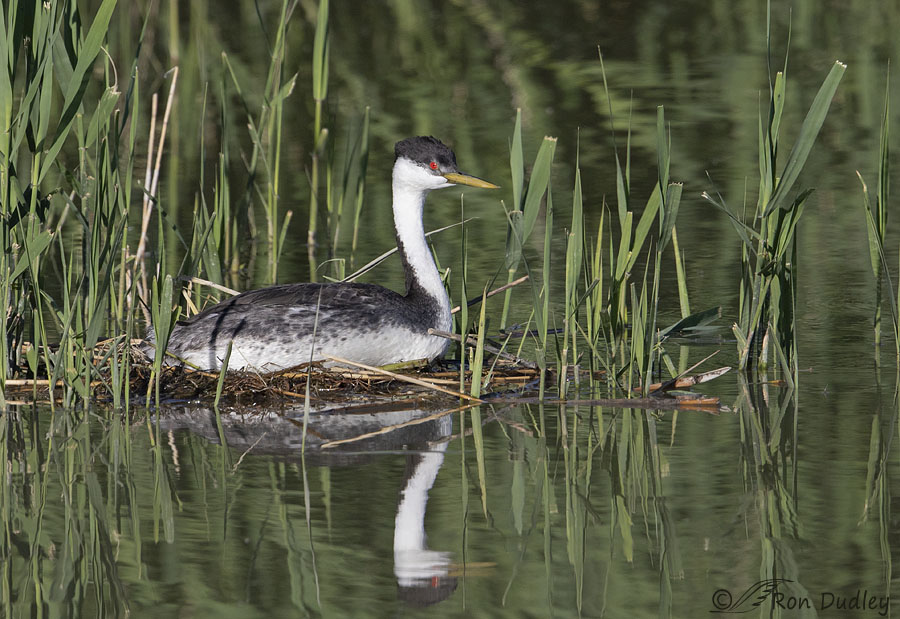
Yesterday morning I found this Western Grebe on her nest at Bear River MBR. In this species both sexes incubate but based on bill size and shape I believe this is the female of the pair. I could be wrong but either way I don’t think it makes much difference to the behavior I’ve documented.
I photographed her on the nest for a few minutes but she wasn’t doing much so I left her to look for other birds.
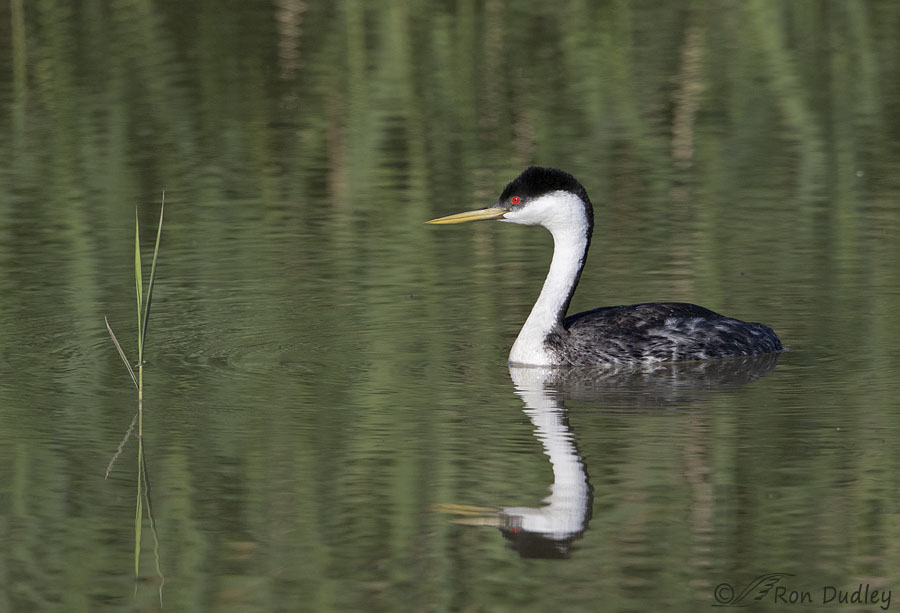
But some time later I could see she was off the nest so I returned. By then the morning sun was warm so any eggs in the nest would be fine unattended for a while and I’m sure she needed a break from the tedious chore of incubation.
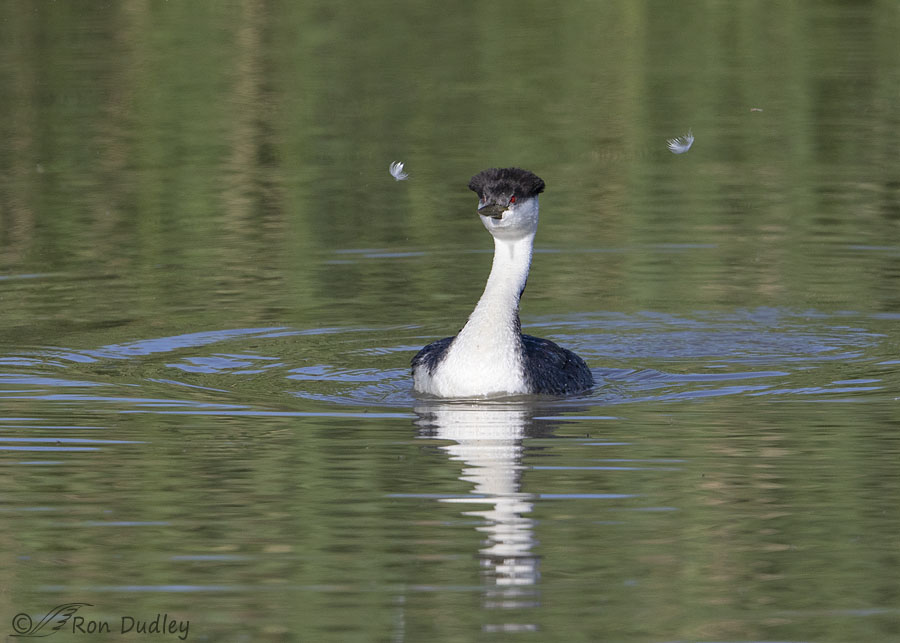
She mostly just lazed on the water and preened, often dislodging loose feathers during the process. Here she shook her head and two flank feathers went flying through the air. Grebes often eat their own feathers so when they settled on the water I thought she might go after them as they so often do.
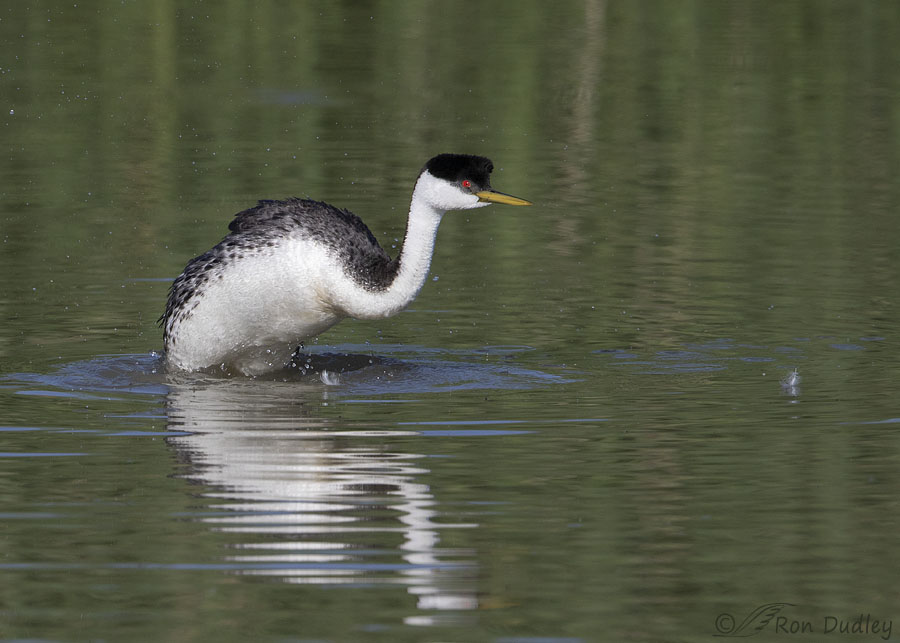
But she completely ignored both of them as she went about doing what grebes do.
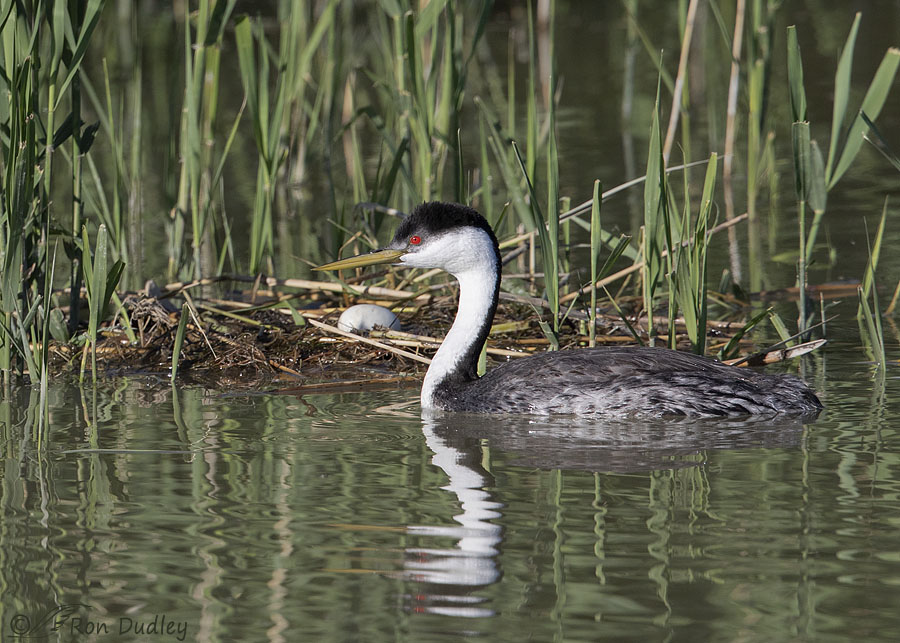
Soon she returned to the nest which contained a single egg. Clutch size of this species is 1-4 eggs and they’re laid at 1-2 day intervals so she’ll be laying more eggs soon.
I thought her behavior near the nest was a little odd. She approached it closely several times, sometimes facing it directly as if she was studying it.
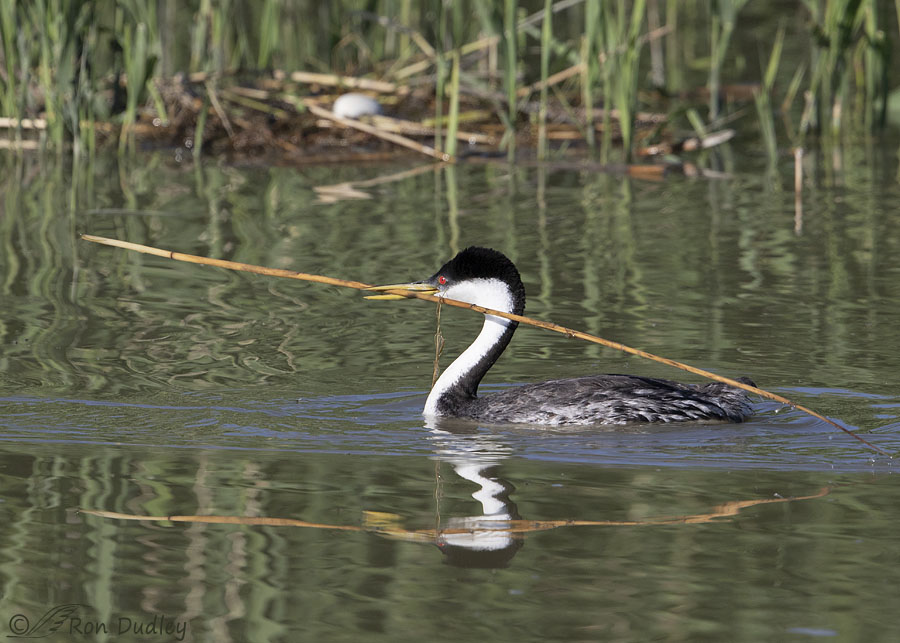
Then in her best Teddy Roosevelt imitation she picked up what could only be called a ‘big stick’ with the apparent intention of adding it to her nest.
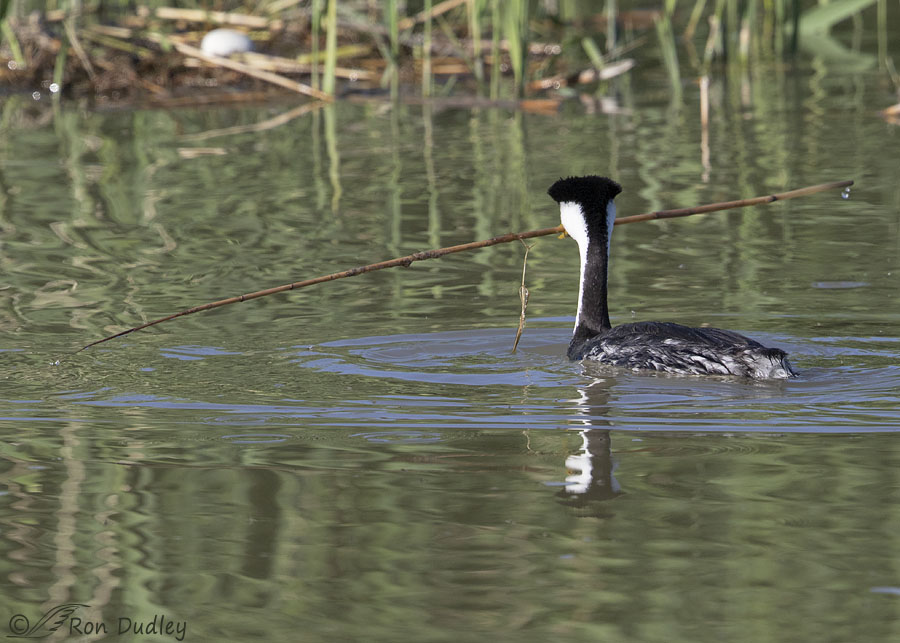
But she never approached the nest from this angle. She stopped in the water as she looked at it and then…
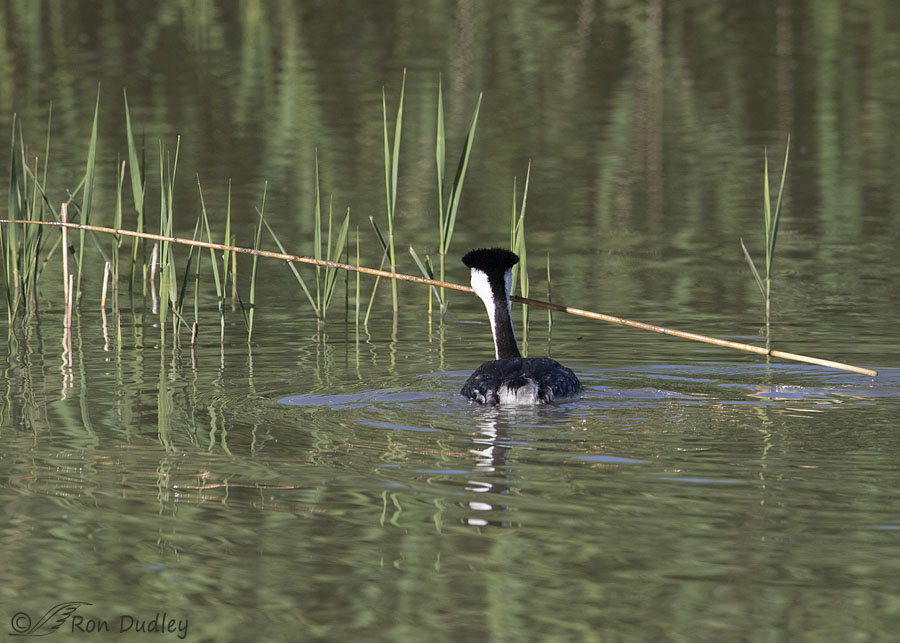
circled around in an attempt to approach the nest from the right and behind it. But it was apparently obvious to her that carrying the stick at this angle in her bill through the emergent vegetation would be an impossible task so she…
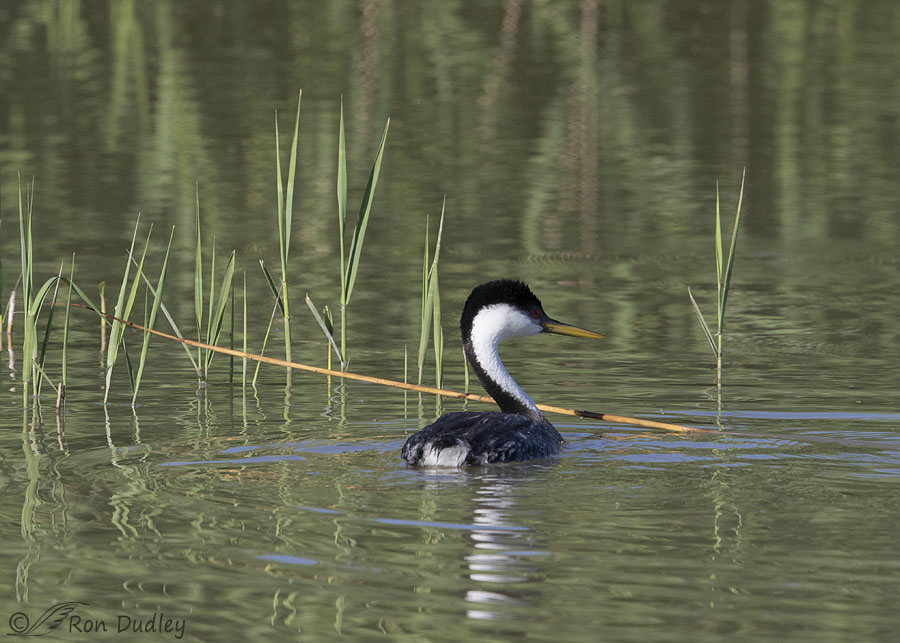
dropped it. Here most of it is still falling to the water.
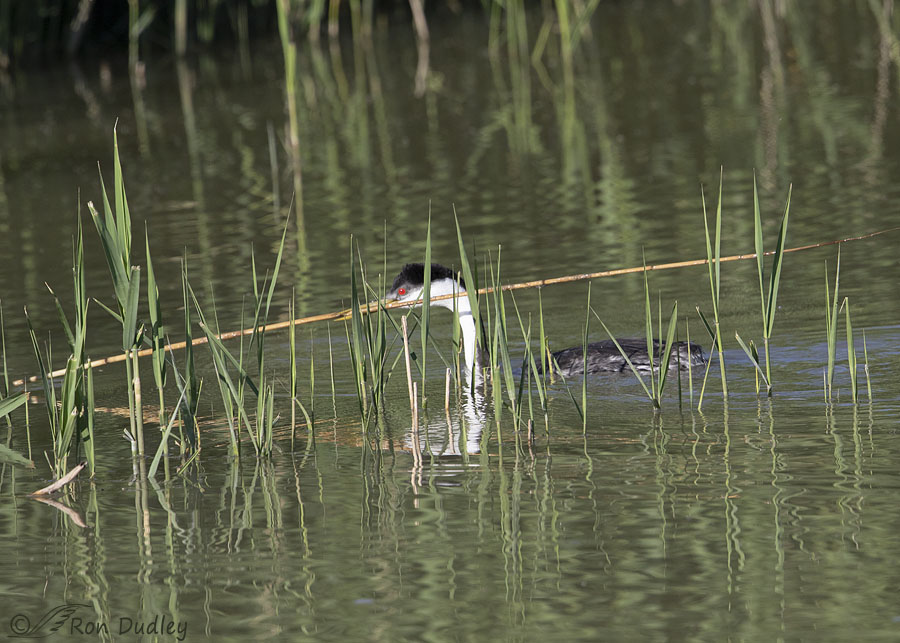
When she picked it up again she was carrying it at more of an oblique angle, presumably because that way it would pass through the vegetation more easily. At this point the nest is about 20′ in front of her but the emergent vegetation became thicker as she approached the nest so…
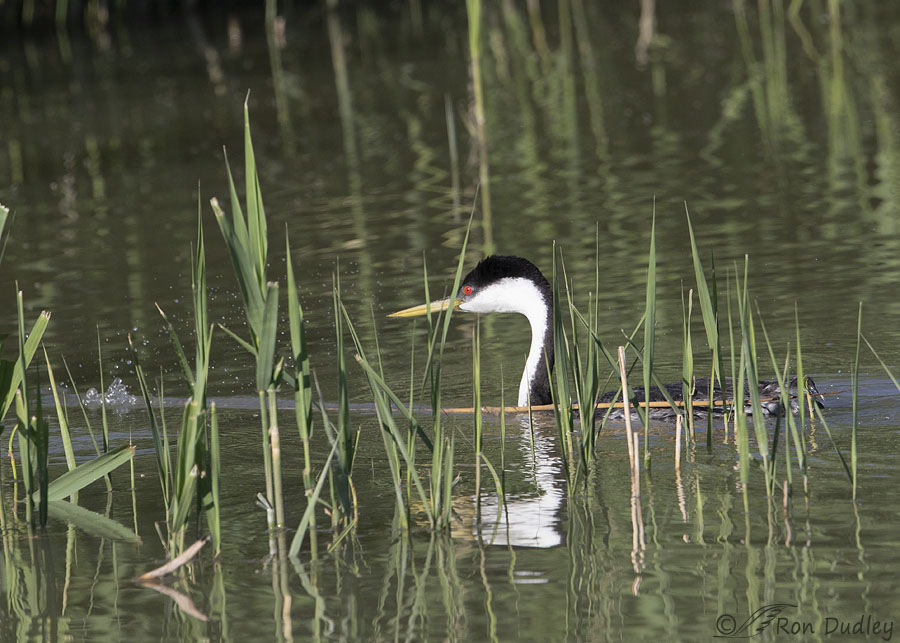
she dropped it again. Here we can see the resulting splash at one end of the stick. She actually dropped the stick about a half dozen times but including all those photos would make this post even longer than it already is.
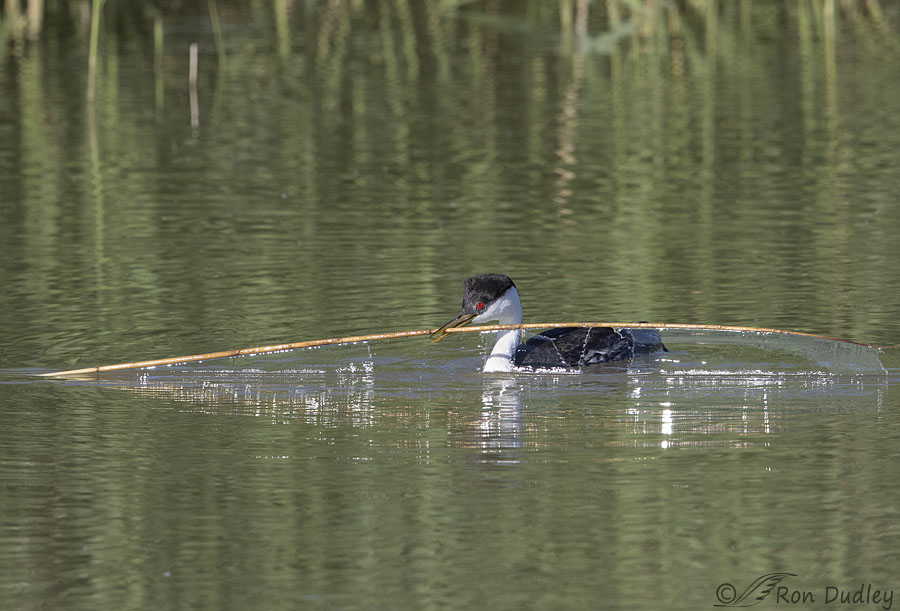
One time when she picked it up again surface tension and adhesion between the stick and the water produced an interesting curtain of water between the stick and the water’s surface.
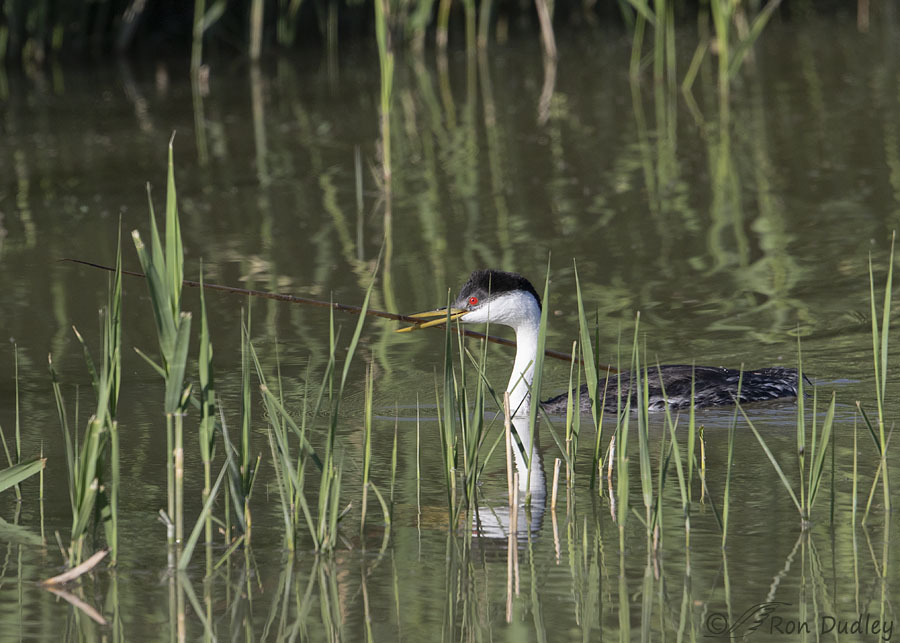
She was nothing if she wasn’t persistent. Eventually by pointing the stick almost straight in front of her as she swam through the ever-thickening vegetation she was finally able to…
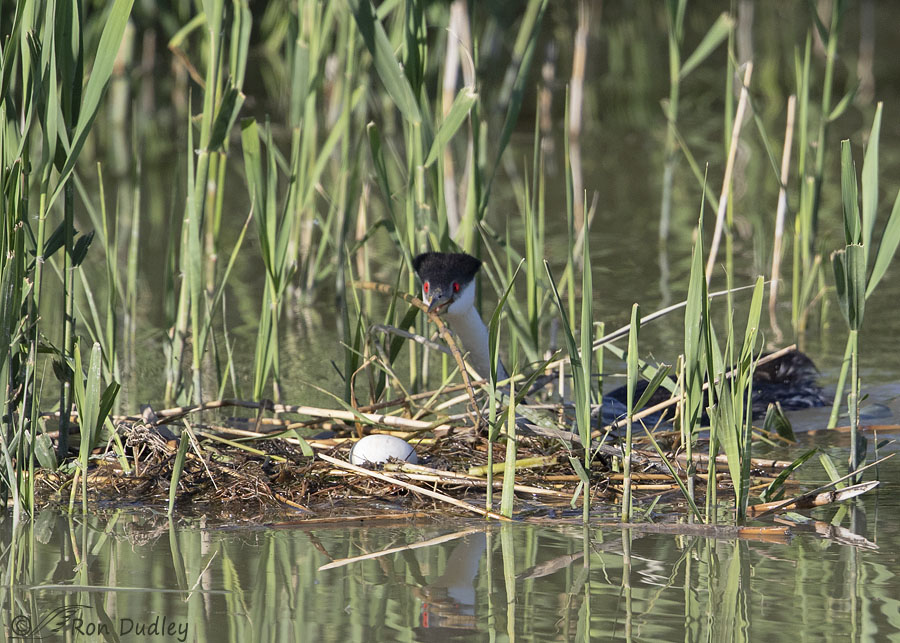
deliver the stick to the nest.
I’m not sure why she didn’t approach the nest from the front like she originally could have. She’d have had to go through less vegetation from that direction but she chose to do it the hard way. No matter, she was eventually successful and this photographer sure had fun watching her solve the problem.
I hope to watch the progress of this nest in the days and weeks to come. Doing so would scratch this grebe-lover’s itch.
Ron


I *love* this series…it felt like I was crouched by the edge of the water and watching her myself. I so appreciate seeing these photo series that you do sometimes. Being able to have a window into her world as she works on her nest is such an extraordinary gift. Thanks, as always, Ron!
What a great post today. So many elements in the photos and story.
I had no idea that Western Grebes looked so comical when viewed head on. Is that seasonal? I don’t recall the head feathers sticking out like in the winter when we see them on salt water.
Those eyes look like they could shoot laser beams.
Lyle, that ‘laser beam’ effect when they’re looking at the viewer is often much more pronounced than it is in that photo. It can be so intense it looks faked, like it’s been ‘photoshopped’.
And no, it isn’t seasonal that I’m aware of.
I always enjoy good bird photography, but I especially like it when you get behavioral shots. Always interesting!
I’m a sucker for behaviors too, David. Combining good photos while documenting them is my passion, though not always achieved.
Yet another fascinating series. I particularly loved the water curtain.
I have no doubt that birds/animals are problem solvers. And, if I was required to sit on the nest for extended periods of time I would sure as hell want it to be as safe, comfortable (and probably aesthetically pleasing, as possible. Quite a lot of people who have been in lockdown would agree.
Thanks, EC. I too was intrigued by that water curtain. I don’t believe I’ve ever captured anything like it in my photos before.
Wonderful series. I loved it!
Good. Thanks, Len.
Very interesting series, I love the floating feathers in the air. The water tension on the stick is a great catch.
I hope her nest is successful!
I hope it is too, April. It’s a little exposed so I do worry a little…
This series reminds me of the running gag in All in the Family in which Archie tries to go through a doorway with a broom/rake/etc. at the wrong angle and gets stuck. She is much smarter!
Thank you for taking these shots and sharing them and the commentary with us. I’m sure I would have been too enthralled to even depress the shutter button once!
Your comment brought back fond memories of All in the Family, Marty. That show was ahead of its time and I loved it even though it made me a little uncomfortable at times.
Me too, Marty, me too. Which is OFTEN the case with the series that Ron gives us.
Great series and lesson! She certainly is not a ‘bird brain’ in the negative context. I will say though that the nest ‘style’ is sure open and without great form…I can’t help but wonder what about it made her want to add more. I hope you are able to add to the story in the coming weeks.
“I can’t help but wonder what about it made her want to add more”
Kathy, Birds of the World says the nest is “added to continuously, especially in first week.” I’m not sure why.
After spending most of a cup of coffee lusting over quality photographs of a Western Grebe, my ancient memory cells reminded me of being in a hurry to get through a tool shed door with a shovel and almost breaking a rib. Back up, point shovel toward door, walk slowly.
Another terrific series of behavioral images from the Professor!
Your story made me laugh, Wally. In recognition I’m afraid… 🙂
What a wonderful series! I delighted in watching the drama unfold and the slide of time element is always spectacular! The water curtain is beautiful.
I’m sure you know where I stand on birds’/critters’ analytical abilities. I mean why WOULDN’T they have that ability? They face situations that present the necessity to solve problems every day. If they didn’t have the ability to noodle stuff out, they wouldn’t be able to survive very long in The Great Out There, would they?
I’ve also watched a lot of nest-building activities from a bunch of different species and it”s obvious to me that they’re VERY particular about where things (sticks, grasses, bark and other materials) go for the finished product to be structurally strong to withstand the local elements. Yes, sometimes new nest builders don’t always get it right, but that’s true of humans, too!
Laura, it’s sometimes difficult to figure out the logic of birds but it’s still analytical, seems to me. And I’m sure it often makes more sense than we think it does.
What fun! Not the “dumb clucks” many would like to think! 😉 Still takes a lot of energy even with “thinking it through” but then I’m guessing she had some with the “sitting”…… 🙂 Wonderful series, Ron…….
Thank you, Judy.
Gosh that was fun to follow! And her expression at the end is just great!! Thanks again, Ron!!
You’re very welcome, Mary.
A very interesting, educational, and entertaining series Ron. Great shot showing the water curtain between the stick and the surface. And what persistence she showed in working with that stick till she got it into the nest. I was imagining how many things I could have accomplished if I had her patience and persistence. I have never seen a Western Grebe nest like this, but I have seen the same open on the water nest with a Pied-billed Grebe. This type of nest is so exposed to nest robbers such as our ever present Ravens.
“This type of nest is so exposed to nest robbers”
Everett, both parents guard the nest and they’re very aggressive toward threats from predators. I’m sure their sharp bills are intimidating.
What a wonderful series. There’s no question in my mind that birds are problem-solvers, and this is just another bit of proof for my conclusion!
I’m convinced of it too, Shoreacres, at least some of them.